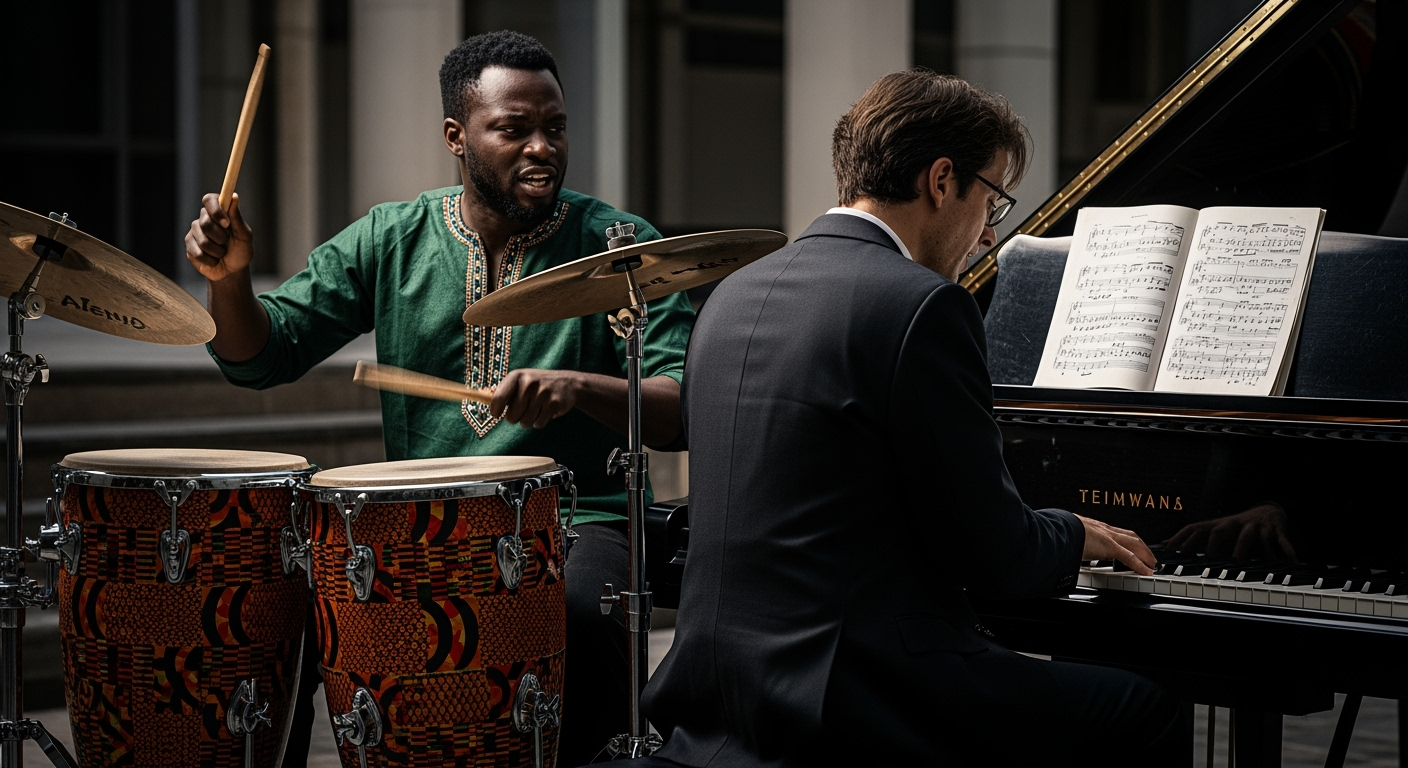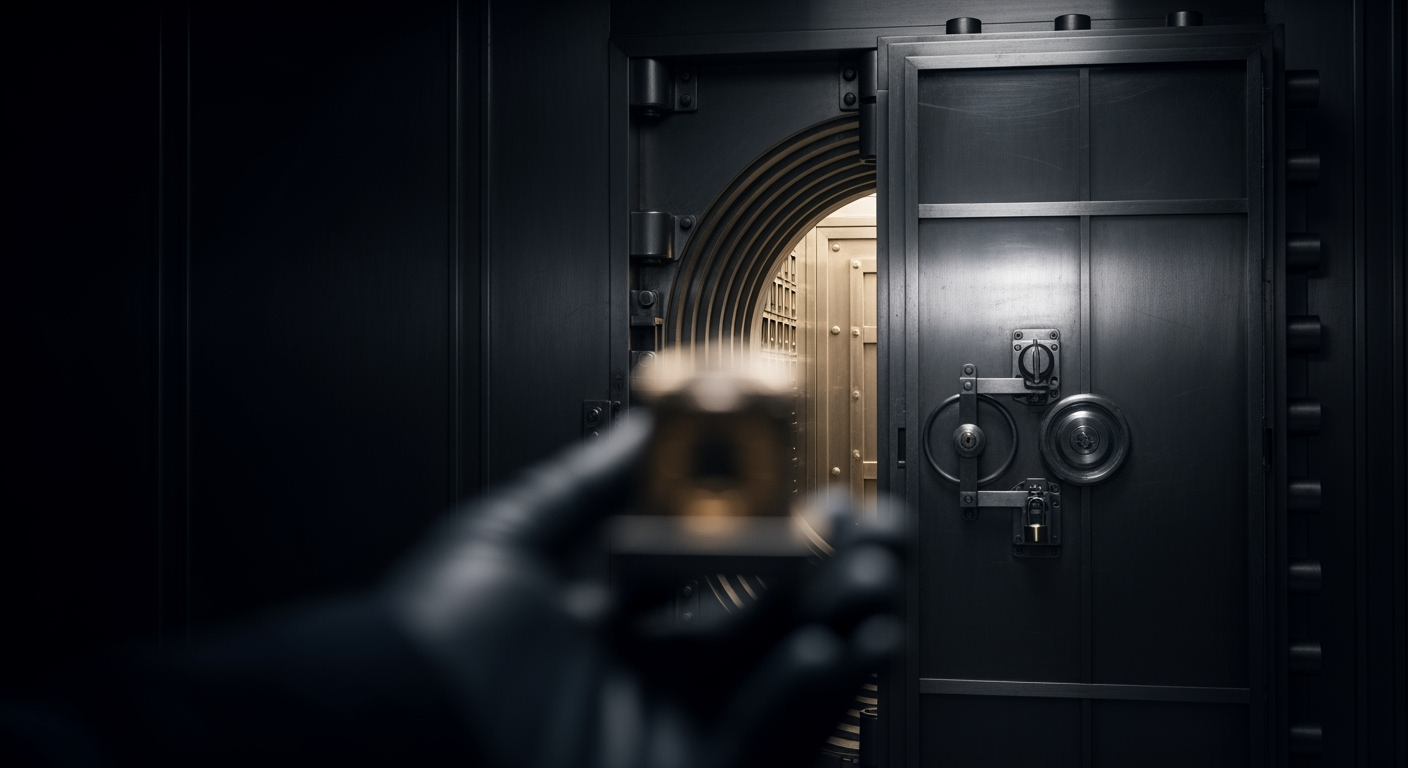Related Articles

"Das crazy" Crowned German Youth Word of the Year 2025, Reflecting English Influence and Linguistic Nuance

Rhythms of Reconciliation: Afrobeat and Beethoven Converge in Landmark 2025 Campus Project





PARIS – In a brazen operation straight out of a thriller, a team of audacious thieves executed a lightning-fast robbery at the Louvre Museum on Sunday, October 19, 2025, making off with nine "priceless" pieces of the French Crown Jewels from the Galerie d'Apollon. The daylight heist, completed in a mere six to seven minutes, has sent shockwaves through the international art world and ignited a fierce debate over the security vulnerabilities of France's most cherished cultural institutions.
The meticulously planned theft occurred around 9:30 a.m. local time, shortly after the Louvre opened its doors to visitors. Disguised as construction workers in yellow and orange vests, a group of four masked individuals approached the museum's Seine-facing facade, an area susceptible due to ongoing construction. They deployed a vehicle-mounted electric ladder, commonly known as a basket lift or cherry picker, to scale the building and access a second-floor balcony leading to the Galerie d'Apollon.
Using a battery-powered disc cutter or grinder, two of the thieves breached a glass window to gain entry to the gallery. Museum guards present in the area were reportedly threatened with the power tools before the culprits proceeded to smash display cases and extract their targets. The stolen items include a tiara, necklace, and an earring from the Queen Maria Amalia sapphire set, an emerald necklace and a pair of emerald earrings from the Marie Louise set, and a reliquary brooch, a large corsage bow brooch, and the tiara of Eugénie de Montijo. In their hasty escape, the thieves inadvertently dropped one of the treasures, the Crown of Empress Eugénie, which was later recovered outside the museum, damaged. The entire operation was concluded with the thieves fleeing on Yamaha TMAX motor scooters, reportedly attempting to set fire to the basket lift as they departed.
The incident marks the first art theft from the Louvre since 1998, when Camille Corot's painting "Le chemin de Sèvres" disappeared and has never been recovered. The museum, which welcomed 8.7 million visitors in 2024, found itself immediately closed following the robbery, with confused tourists being ushered out as police sealed off the area. French President Emmanuel Macron swiftly condemned the act, calling it "an attack on a heritage that we cherish because it is our history," and vowed to recover the stolen works.
The brazen nature of the heist, carried out in broad daylight with tourists inside, has sharply focused attention on the Louvre's security protocols and, more broadly, the protection of France's cultural heritage. Interior Minister Laurent Nuñez described the perpetrators as a "highly organized operation" and a "seasoned team" of thieves. Justice Minister Gérald Darmanin openly acknowledged security flaws, stating that the ability for individuals to park a furniture hoist in the heart of Paris and steal "priceless jewels" conveyed "a terrible image" for France.
This incident is not isolated. In recent months, other French museums have fallen victim to similar sophisticated thefts, including the Adrien Dubouche Museum, the Cognacq-Jay Museum, and the Natural History Museum in Paris, where gold samples worth $700,000 were stolen just last month. Museum staff and unions at the Louvre had previously voiced concerns about understaffing and security inadequacies, leading to calls for renewed scrutiny and investment in safeguarding these invaluable collections.
With an intensive investigation now underway, involving a team of 60 investigators, Interpol, and national security agencies, the crucial question remains: where might these irreplaceable artifacts resurface? Art experts and authorities generally agree that the historical significance and fame of these particular jewels make them virtually "unsellable in their current state" on any legitimate market. Alexandre Giquello, president of Drouot Patrimoine, a leading auction house, found it "hard to believe" the Louvre jewels were stolen to order, implying their notoriety would make a public sale impossible.
This assessment points to a future where the jewels might either disappear into the shadowy realm of private collectors or be held for ransom. The illicit art market, a secretive network dealing in stolen cultural property, operates outside conventional channels, making tracking and recovery notoriously difficult. However, history offers some precedent for recovery, even after decades. For example, two pieces of 16th-century Italian armor stolen from the Louvre in 1983 were only recovered in 2021. The most famous Louvre theft, the Mona Lisa in 1911, was eventually recovered two years later after the thief attempted to sell it.
The sheer value and historical weight of the stolen items mean they cannot be openly displayed or easily liquidated without attracting immediate attention. This often leads to a "trophy" existence, hidden away in private vaults, or a complex journey through various intermediaries in the black market, sometimes resurfacing years later in unexpected locations or under new identities. International alerts have been issued, and CCTV footage is being scrupulously analyzed in the hope of tracing the thieves' movements and identifying any potential avenues for the disposal of the stolen treasures.
The audacious Louvre heist serves as a stark reminder of the persistent threats faced by cultural institutions worldwide, regardless of their reputation for security. While authorities focus on apprehending the culprits and recovering the stolen French Crown Jewels, the incident has inevitably spurred a wider reevaluation of museum security measures across France. The vulnerability of such iconic sites, as demonstrated by the use of construction equipment and the quick breach of security, highlights the need for continuous adaptation and investment in safeguarding global heritage. The search for the missing jewels continues, a testament to the enduring allure and intrinsic value of these historical artifacts and the determination to bring them back to public view.